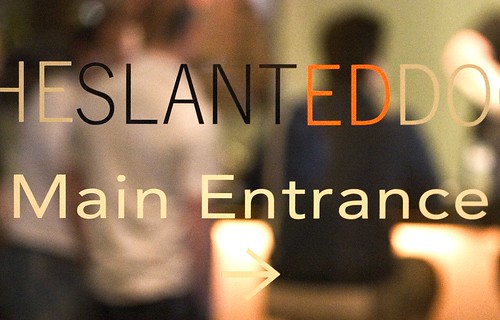By Professor Jim Horne
Ask people whether they would like more sleep and the majority will say yes.
But does this mean they are not getting enough? I don't believe so.
Thanks to oft-repeated assertions that our ancestors slept longer than we did, not to mention claims that a lack of shut-eye can cause high blood pressure, diabetes and obesity, and it's easy to see why we think we are chronically deprived of sleep.
Wake up you sleepy head: Most people need less than 8 hours of sleep each night
The fact is, most of us are probably getting more sleep than we strictly need - we've just convinced ourselves we're sleep deprived.
It's nothing new. In 1894, the British Medical Journal ran an editorial warning that the 'hurry and excitement' of modern life was leading to an epidemic of insomnia.
But far from being chronically sleep-deprived, I believe things have never been better.
Unlike the typical worker from 150 years ago, who toiled for 14 hours a day, six days a week and went home to a crowded, flea-infested bed, most of us sleep perfectly adequately.
There have been several large studies over the past 40 years into how much sleep people actually get. The findings show that the average healthy adult sleeps for seven to seven-and-a-half hours a night.
The much-repeated 'fact' that our ancestors used to sleep around nine hours is a myth and originates from a study in 1913 by researchers in California, which found that children aged eight to 17 slept for this amount of time.
Even today, this figure holds true for that age group - as the parents of any teenager will attest!
But adults do not need so much sleep. Some thrive on five hours a night, while others need seven.
The only part of your body that would be affected by a true lack of sleep - and that means several days without any sleep - is your brain.
Tests prove that there's no physiological difference in the muscles or organs of the body when you're asleep as opposed to when you're simply lying still and fully awake.
The brain however, is another matter. It needs sleep. Although it comprises only 2 per cent of your total body weight, it uses 20 per cent of the energy you consume in your body.
There are three main parts to the brain - the cortex, the mid-brain and the hind brain.
The mid and hind brain work flat out to control your motor functions, such as breathing, blood pressure, heart rate and liver function. They carry on working even when you're in deep sleep.
But the cortex, which controls thinking, speech, memory and perception needs time off - and that occurs when you go to sleep.
Without it, these functions deteriorate rapidly. After only one night without sleep, we are unable to deal with as much pressure, we get more irritable and we can't cope with disruption to our routine.
We forget things, we become like robots, unable to have conversations with people, unable to work out simple lists or sums.
Yet there are some parts of the cortex which are remarkably resilient.
In 1966, a 17-year-old high school student called Randy Gardner raised money for charity by staying awake for 11 days. It remains a record.
Four days into the experiment, he began to hallucinate. Towards the end he could barely converse with people or perceive what was going on around him.
But he could play pinball with remarkable ease. The part of the cortex which controls hand/eye coordination appears to be unaffected by lack of sleep.
There is a lot of fear-mongering about the so-called dangers of lack of sleep - but, in fact, the biggest danger of not having adequate sleep is having an accident, such as falling asleep at the wheel of a car.
Of course, I would never dismiss the distress that insomnia causes. But people who suffer from it tend to be very stressed - whether through work or a bereavement - and it's the stress that wears down their immune system and makes them more susceptible to infection.
Yet despite the fact most of us do get enough sleep, a whole industry has emerged to help us with our 'sleep problem' and I warn: 'caveat emptor' - let the buyer beware.
Herbal preparations or drinks are a useful short-term crutch for those suffering from sleepless nights, in the sense that people feel reassured that by taking them they will have a good night's sleep.
Drugs are inadequate in the long term because insomnia is not a physiological problem - it's a psychological one, usually caused by stress.
The only way to treat a true insomniac is by tackling their problems while they're awake.
Once the waking problem is sorted, they will find it much easier to drift off - and get the hours of sleep they need, not some arbitrary 'ideal' based on misinterpretations of history.
• Sleepfaring - A Journey Through The Science Of Sleep by Professor Jim Horne (Oxford University Press, £6.99).
Lavender, silk... and turn off the TV
Room temperature: The ideal temperature is 18c, according to Chris Idzikowski from the Edinburgh Sleep Clinic. This will ensure your body's core temperature drops enough to encourage sleep. If the room is too warm (above 24c) your brain won't send the correct triggers for sleep. If the room is too cold (below 12c), the body will struggle to maintain temperature and disturb sleep.
Duvet: Have both a summer and a winter duvet. A 10-13.5 tog winter duvet will be far too warm for the summer months, when a 4.5 tog is ideal.
Ventilation: Always have an open window, even in winter. Fresh air encourages sleep.
Your bed: Don't scrimp - this is where you will spend 25 years of your life. The typical person sweats half a pint of liquid during the night and changes position 40-60 times. Dr Neil Stanley, from the British Sleep Society, recommends choosing a good, supportive bed base with a firm, thick mattress. Your mattress should be changed every 12 years and a futon should be kept for a maximum of three years.
Bed linen: Cotton and linen are best as they absorb more moisture.
Lavender: You could sprinkle a tiny amount of lavender oil on your pillow or spray some in the air. Extensive research shows it can improve the quality of sleep by 20 per cent.
Nightwear: Loose and made of natural fibres. Bed socks are a good idea as warm feet signal healthy blood flow to the brain, inducing restful sleep.
Alarm clock: Turn it down or preferably off. Dr Neil Stanley says: 'Anticipating a shrill alarm clock is stressful and will make insomnia worse.'
Curtains/blinds: As thick and heavy as possible. Ideally, a bedroom should be totally dark until 4am for optimum sleep. Darkness stimulates the pineal gland to produce the hormone melatonin, which induces sleep. Switch off your landing light, too - even low levels of light under a door can keep you awake.
Television: Don't have one in the bedroom. 'It should be a haven of tranquillity,' says Dr Stanley. 'When you walk in, your mind must get the message that this is the place for sleep.'
Partner: If your other half is a fidget or a snorer, consider separate beds. Dr Stanley says: 'People who have poor sleep have higher rates of divorce and separate beds can improve, not ruin a sex life.'
Warm bath: This will soothe you and relax your muscles, but avoid showering as this will wake you up.
Avoid alcohol: Alcohol encourages the production of nore-epinephrine, a hormonelike neurotransmitter secreted in response to excitement and stress. Hours after drinking, a burst of noreepinephrine can disrupt your sleep and is likely to wake you earlier than usual.
Original here


 3. Noodle, Texas
3. Noodle, Texas

 8. Peculiar, Missouri
8. Peculiar, Missouri















